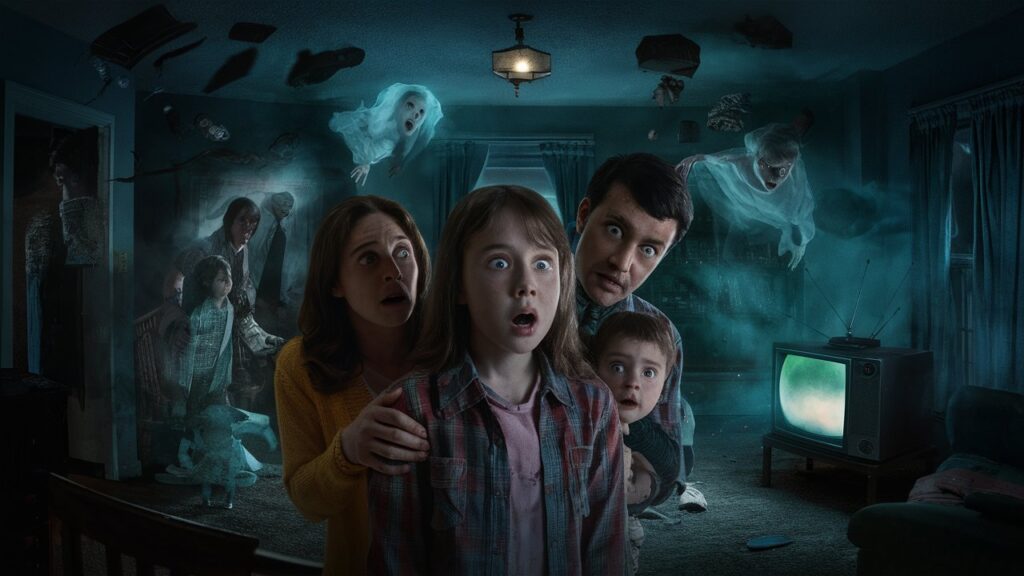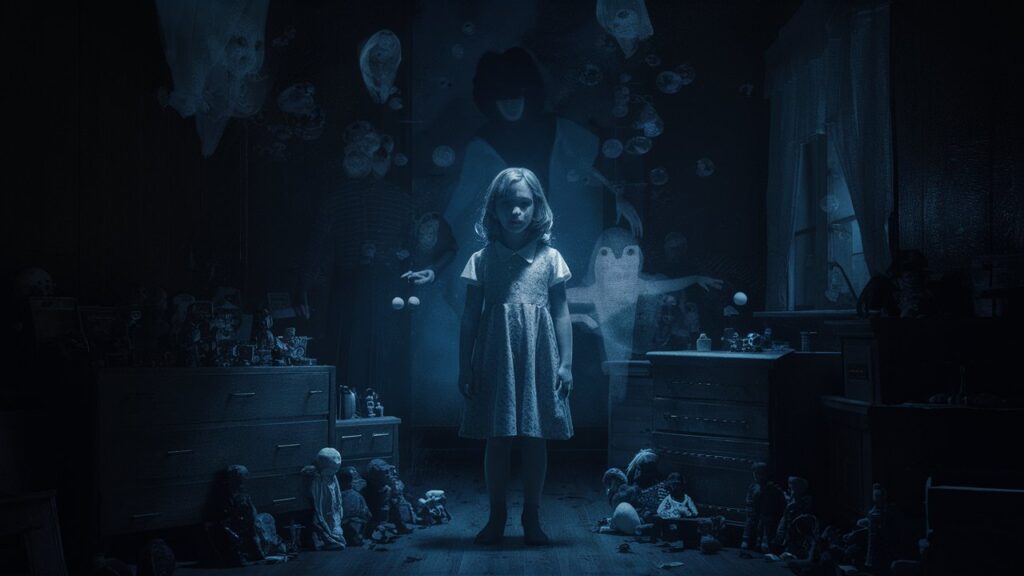A Shocking Revelation
“the 1982 movie poltergeist used real skeletons as – tymoff,” directed by Tobe Hooper and produced by Steven Spielberg, remains a classic in the horror genre. Among the many spine-chilling scenes in the film, one in particular has sparked endless intrigue and speculation: the swimming pool scene where Diane Freeling, played by JoBeth Williams, is confronted by a mass of skeletons. Many fans don’t know that these skeletons were not just props—they were real human skeletons.

Real Skeletons Were Used
Surprisingly, the filmmakers decided to use real skeletons instead of fake ones. Cost considerations primarily drove this decision. At the time, creating realistic-looking skeletons from scratch was expensive. Using real human skeletons sourced from medical supply companies was actually cheaper and more convenient for the production team.

Cost-Effectiveness Over Ethics
The decision to use real skeletons was not taken lightly but boiled down to practicality. Special effects artist Craig Reardon confirmed that real skeletons were used because they were affordable and readily available. This revelation added an eerie layer to a terrifying scene, blurring the lines between fiction and reality.

A Blend of Real and Fake
It’s crucial to note that not all the skeletons used in “The 1982 Movie Poltergeist Used Real Skeletons as—tymoff” were real. The props team likely used a mix of real and artificial skeletons to achieve the desired visual effect. This combination ensured that the scene was as realistic and horrifying as possible, contributing to the film’s enduring legacy.

Cast Unaware During Filming
One of the most chilling aspects of this story is that the cast members, including JoBeth Williams and Dominique Dunne, were unaware that the skeletons were real while filming the scene. Williams later recounted her shock upon learning the truth, adding to the film’s mystique and the unsettling atmosphere surrounding its production.

The “Poltergeist Curse” Myth
The use of real skeletons has often been linked to the infamous “Poltergeist Curse.” This urban legend suggests that the film’s cast and crew were cursed, leading to several untimely deaths and accidents. While it’s true that some tragic events befell those involved in the movie, most were due to natural causes or unrelated circumstances, dispelling the notion of a supernatural curse.

Tragic Losses
Dominique Dunne, who played Dana Freeling, was tragically murdered shortly after the film’s release. Heather O’Rourke, who played Carol Anne, died at a young age due to medical complications. These losses fueled speculation about the curse, but no evidence links these events to the film’s production.

Legacy of the Film
Despite these dark associations, “The 1982 movie Poltergeist used real skeletons as—tymoff” remains a landmark in horror cinema. Its innovative use of special effects, gripping stories, and memorable performances have cemented its place in film history. The revelation about the real skeletons only adds to its allure, making it a topic of fascination for fans and film scholars alike.

The Impact on Future Productions
The controversy surrounding using real skeletons in “The 1982 movie Poltergeist used real skeletons as – tymoff” had a lasting impact on the film industry. It sparked discussions about ethics in filmmaking and the importance of transparency with cast and crew. Today, using actual human remains in films is highly regulated and generally avoided.

The Film’s Technical Achievements
Beyond the skeleton controversy, “The 1982 movie Poltergeist used real skeletons as—tymoff” is celebrated for its groundbreaking special effects. The film employed state-of-the-art techniques to create its haunting visual and auditory scares. From the terrifying tree attack to the ghostly apparitions, the film set a new standard for horror effects.
Also Read: Church of the Highlands Exposed

Spielberg’s Influence
Steven Spielberg’s influence on “the 1982 movie Poltergeist used real skeletons as—tymoff” is unmistakable. Although Tobe Hooper is credited as the director, Spielberg’s touch is evident in the film’s pacing, character development, and overall tone. His ability to blend horror with heartfelt family drama elevated the film beyond typical genre fare.

A Haunting Soundtrack
Jerry Goldsmith’s eerie soundtrack is crucial in building tension and fear. The music enhances the unsettling atmosphere and underscores the supernatural elements, making the film even more immersive.

Cultural Impact
“the 1982 movie Poltergeist used real skeletons as – tymoff” has left an indelible mark on popular culture. Its iconic lines, such as “They’re here,” and its memorable scenes have been referenced and parodied in numerous other films, TV shows, and media. The film’s influence can be seen in subsequent horror movies that strive to blend the supernatural with everyday family life.

Behind-the-Scenes Challenges
The production of “the 1982 movie Poltergeist used real skeletons as – off” was not without its challenges. The use of practical effects, combined with the intense demands of the horror genre, made for a grueling shoot. Despite these difficulties, the cast and crew’s dedication resulted in a film that continues to captivate audiences.

The Role of Practical Effects
In an era before CGI dominated the industry, “the 1982 movie Poltergeist used real skeletons as—tymoff” relied heavily on practical effects to create its scares. These effects’ tangible, physical nature added a layer of realism that modern digital effects often need to improve. This approach helped ground the film’s supernatural elements in a believable reality.

Audience Reactions
Upon its release, “The 1982 movie Poltergeist used real skeletons as—tymoff” received critical acclaim and was a commercial success. Audiences were both terrified and mesmerized by the film’s blend of horror and family drama. Its ability to scare viewers while also making them care deeply for the characters set it apart from other horror films of the time.

The Film’s Enduring Popularity
Decades after its release, the 1982 movie Poltergeist used real skeletons—Tymoff remains a favorite among horror fans. Its timeless appeal lies in its ability to tap into universal fears—of the unknown, of losing loved ones, and of the supernatural. This enduring relevance ensures that “Poltergeist” will continue to haunt new generations of viewers.

Lessons Learned
The controversy over using real skeletons in “the 1982 movie Poltergeist used real skeletons as – tymoff” is a cautionary tale for filmmakers. It highlights the importance of ethical considerations in production decisions and the need for clear communication with all involved. These lessons continue to inform industry practices today.

A Timeless Classic
“Poltergeist” stands as a testament to storytelling’s power and innovative filmmaking’s impact. Its mix of horror, heart, and technical prowess has secured its place in the pantheon of great horror films. The real skeletons used in its production are just one of many fascinating facets that make “the 1982 movie Poltergeist used real skeletons as—tymoff” a film worth revisiting.

Final Thoughts
The 1982 movie Poltergeist is more than just a horror film; it’s a cultural phenomenon. The revelation that real skeletons were used in one of its most memorable scenes adds a macabre layer to its legacy. While the ethics of this decision can be debated, there’s no denying the lasting impact of “the 1982 movie Poltergeist used real skeletons as—tymoff” on the horror genre and popular culture.



